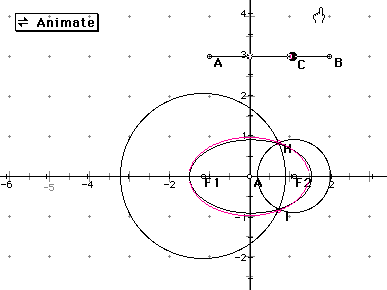
I I constructed a circle with center A, point C inside the circle, and point D on the circle. I constructed segment CD, found its midpoint, and its perpendicular bisector. I traced the locus of the perpendicular bisector as point D traveled around the circle. The results of that construction are below. As you can see, the outlined figure appears to be an ellipse with foci at A and C. I then made a script to repeat this construction for future use.

I did this several times moving C around to several positions closer to the center and further away from the center. The closer C got to the center, the more circular the ellipse. The further away C got from the center, the more elongated the ellipse. When C was exactly on the center, the line enclosed a concentric circle. When C was on the circle, the ellipse degenerated to a line.
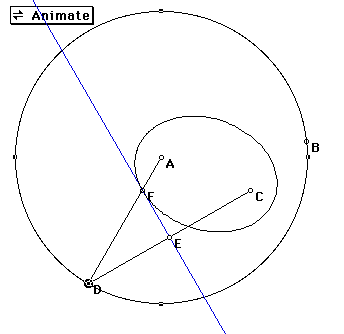
The problem now becomes to prove that the figure above is indeed an ellipse.
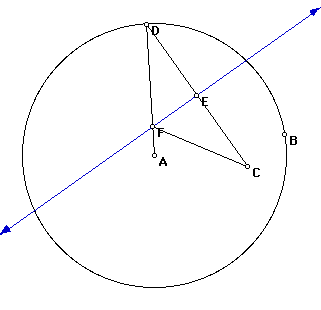


I conjecture that the figure is an ellipse. To prove this, I connected constructed segment F1H and segment F2H as shown below. Since these are also the lengths of segments AC and CB respectively and AB is a constant length, the the sum of F1H and F2H is a constant length. Thus the figure is an ellipse.
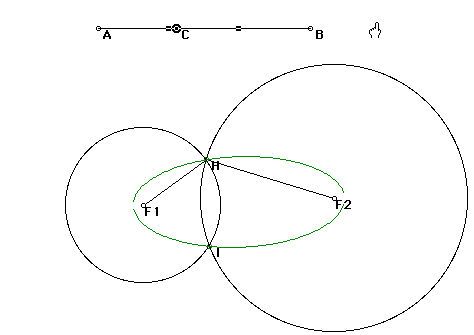
As F1 and F2 get closer, the ellipse becomes more circular and becomes a circle when the two converge as the center. As F1 and F2 get farther apart, the ellipse becomes thinner. The maximum possible distance for F1 and F2 to be apart is the length of segment AB.

I copied and pasted the picture into the original GSP document and adjusted the scales. If you look at the picture below you can see that the conjecture seemed correct.
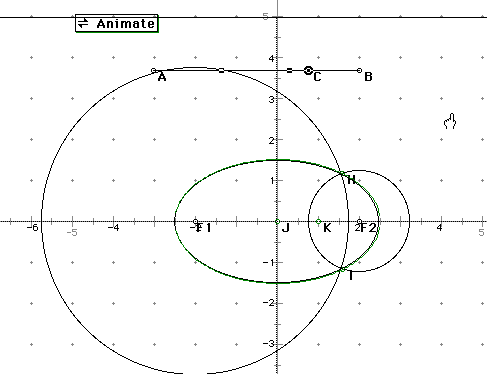

I then pasted the ellipse onto GSP and created the two-pins-and-a string construction as before. I put my centers at (1.2,0) and (-1.2,0). I calculated these focal points using the equation c^2=a^2-b^2. The line segment must be twice the "a" length, because "2a" is the lenght of the major axis. The results are below. I believe the reason that the two do not match exactly is because it is difficult to find 1.2 exactly on the x-axis.
